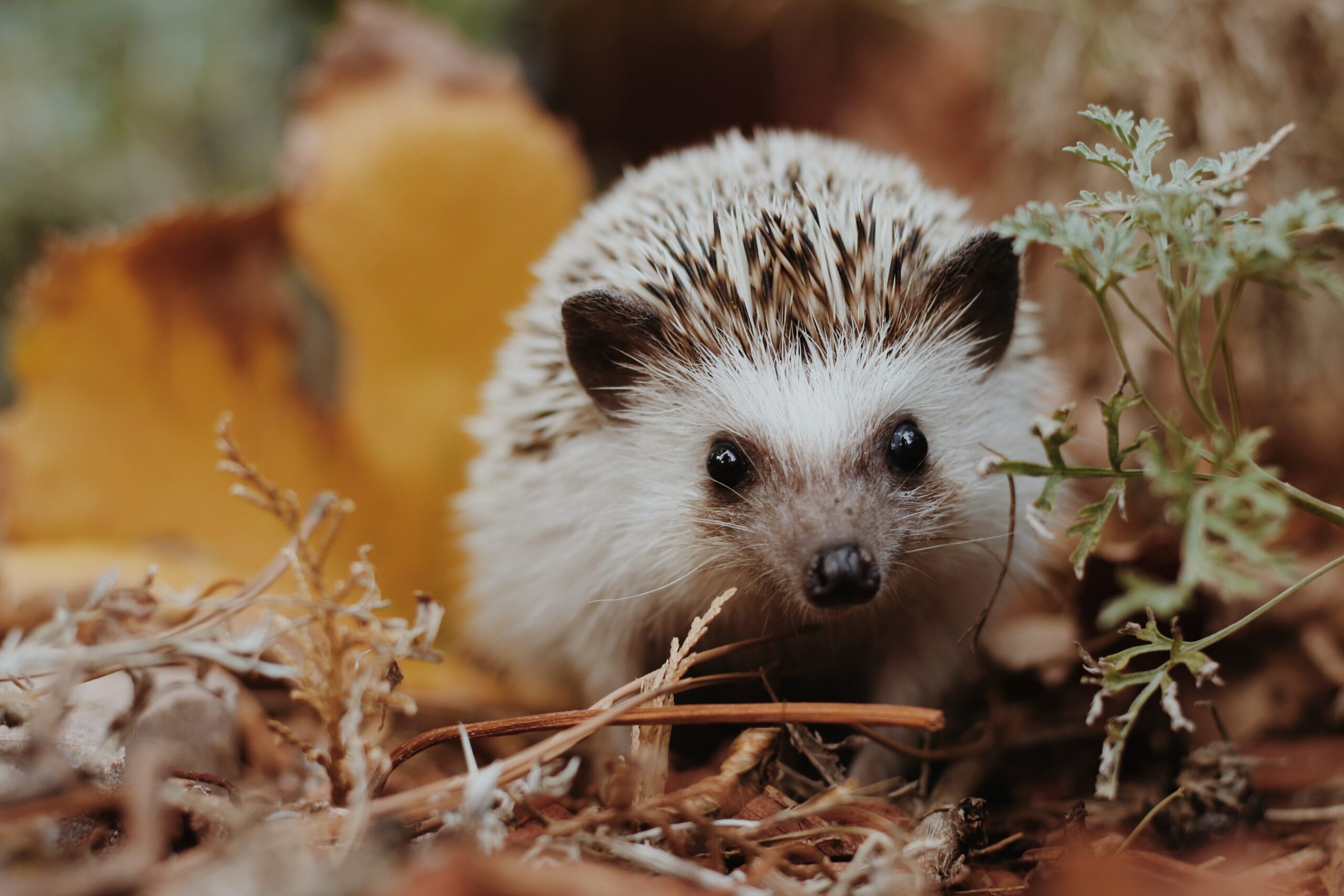
African pygmy hedgehog
The African pygmy hedgehog is perhaps the most famous hedgehog species worldwide, due to the increasing popularity of this hedgehog species in captivity. You might not think it, but this species is really kept as a pet worldwide!

Taxonomy
| Kingdom: | Animalia |
| Phylum: | Chordata |
| Class: | Mammalia |
| Order: | Eulipotyphla |
| Family: | Erinaceidae |
| Genus: | Atelerix |
| Species: | A. albiventris |
Natural habitat
African pygmy hedgehogs occur naturally in semi-deserts and steppe regions. In Central Africa, the daytime temperature averages between 30 and 40 degrees Celsius. African pygmy hedgehogs are nocturnal and sleep in burrows during the day, so they don’t suffer much from this extreme heat. In the even warmer summer months they hibernate.
In the nights, when the African pygmy hedgehog wakes up, the temperature can drop to about 17 degrees Celsius as the coldest temperature. The temperature gradually drops towards the winter period and the African pygmy hedgehog can then have a short winter rest. The cold does not last long in Central Africa, so an African pygmy hedgehog will only hibernate for a few days.
Some countries in the belt of Central Africa have a rainy season. Due to a lack of research, no information is known about the behavior of African pygmy hedgehogs during these seasons, but it is suspected that the animals migrate to a drier habitat.
Geography
African pygmy hedgehogs occur naturally in West, Central and East Africa. The area in which they live, the Sahel, runs from Senegal and Southern Mauritania in western Africa, through parts of the Sahara desert, to Sudan, Eritrea and Ethiopia. From there, the Sahel ends, but the African pygmy hedgehog’s habitat continues across East Africa to southern Zambia.
Countries where the species occurs are Benin, Burkina Faso, Cameroon, Central African Republic, Chad, Ivory Coast, Djibouti, Eritrea, Ethiopia, Gambia, Ghana, Guinea, Kenya, Mali, Mauritania, Niger, Nigeria, Senegal, Sierra Leone, Somalia, Sudan and South Sudan, Tanzania, Togo, Uganda and Zambia.
Climate
The highest temperature in their natural habitat, in the summer months, is around 42 degrees Celsius. The lowest temperature in the coldest country in the winter months is around 5 degrees Celsius. The differences in climates are therefore very large between different countries, especially between the warmest and the coldest months. To calculate an average climate, we have looked at the highest temperature per month and the lowest temperature per month per country. On average, we then arrive at an average minimum temperature of 18 degrees Celsius and an average maximum temperature of 31 degrees Celsius. These numbers are high, because the warmest temperature is measured in the extreme heat of summer and the lowest temperature is measured in the coldest nights of winter. However, both last only a few days, making the average temperature more moderate.
On average, African pygmy hedgehogs in nature have 6 to 8 hours of sunlight per day. In the rainy months they get an average of 172 millimeters of rain per day on 14 days per month. In the dry months they get only 24 millimeters per day on 4 days per month.
Flora & fauna
In a gigantic habitat like that of the African pygmy hedgehog, it is difficult to describe the total flora and fauna. For that you would actually have to look per country which predators and prey animals live there and which plants grow there. But there are some notable things to mention.
African pygmy hedgehogs prefer thickets and taller grasses over a dense forest area. They are especially common along the edges of forests for that reason. Trees that are common in their habitat are Acacia trees and Baobab trees. Acacia trees are loved by, among others, Acacia rats, a species of rodent that is also on the menu of the African pygmy hedgehog. They mainly attack weaker and young animals that land on the ground and can no longer rise. However, baobab trees are not liked by white-bellied cones, because elephants like to use them as a water source. The tree can store hundreds of liters of moisture! Very handy in a dry climate, so the trees store a lot of moisture every rainy season. This is how they get their thick trunks.
The African pygmy hedgehog also shares its habitat with the big five: lions, leopards, rhinoceroses, elephants and buffalo.
Appearance
The body of an African pygmy hedgehog is shaped like a drop when viewed from above. A fairly pointed nose and a round backhand. The head is heart-shaped from the front, with the ears set right behind the eyes. African pygmy hedgehogs have a bald stripe on their head in the middle, between the ears. This is often referred to as a “reverse mohawk.” On either side of this are two muscles, called the dorsal muscles. These run from the head to the backhand and are used by the African pygmy hedgehog to curl up. African pygmy hedgehogs have a relatively large mouth with sharp teeth and four longer front teeth. These are used to kill their prey in one bite. On average, an African pygmy hedgehog is about 15 to 25 cm long and weighs between 250 and 500 grams. However, the average in captivity is 350 to 450 grams. Above 500 grams, the risk of obesity is very high. The species has four toes on the hind legs and five toes on the feet. The species is therefore sometimes referred to as the ‘Four-toed Hedgehog’.
